
2020 Triumph Street Triple RS vs KTM 790 Duke vs Kawasaki Z900: Spec...
- Oct 15, 2019
- Views : 22899

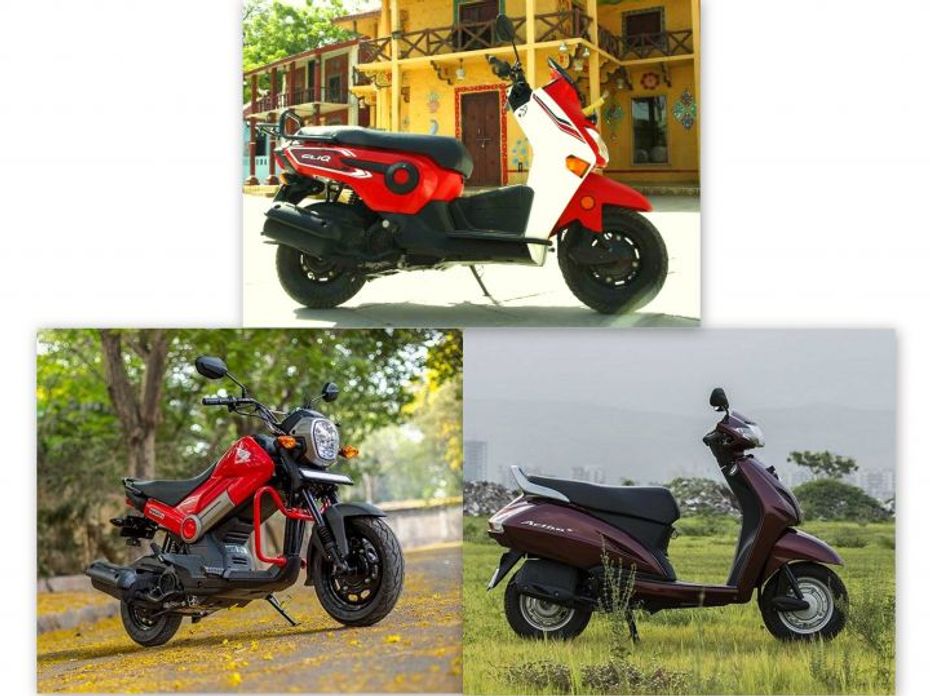
Design:
Look at the new Triumph Street Triple S and you will find it hard to distinguish the new motorcycle from the old bike. And that’s understandable. Triumph designers haven’t redesigned the new street bike but have evolved the design of the bike based on its predecessor. The bike still features the similar bug-eye headlamp but now gets LED position lamps. The tank is more sculpted and the tank extensions have been redesigned while the exhaust muffler is a stubby unit.
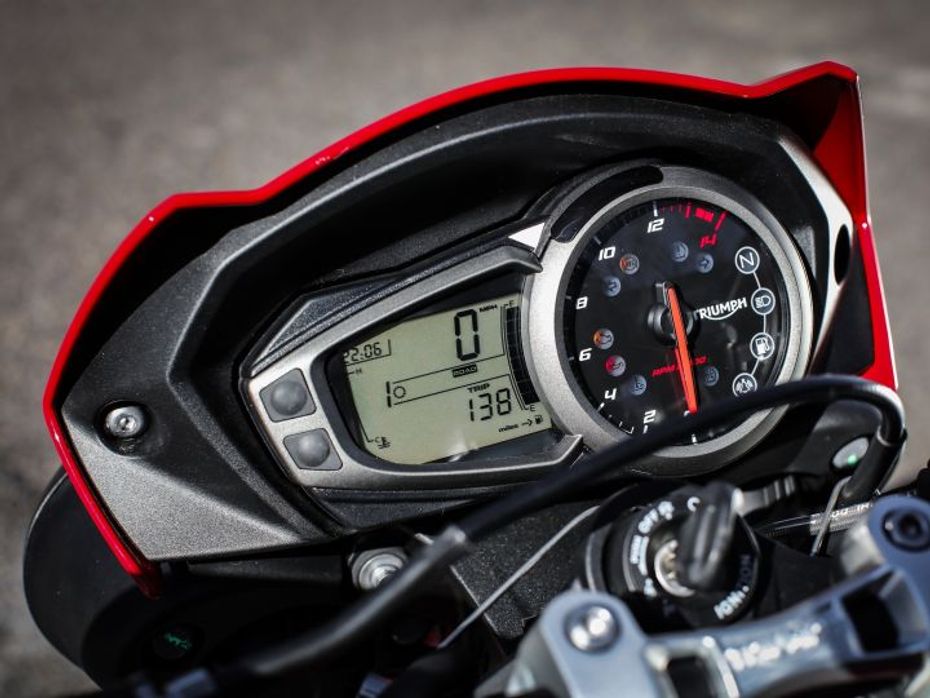
The tail section has been given an overhaul to make it more compact and petite. It also features new split seats and a small fly screen comes as standard while the USD forks aren’t finished in gold as seen on the older machine. The instrument console on the new Street Triple S is similar to the older bike and only the Street Triple RS and R feature the new 5-inch TFT display.
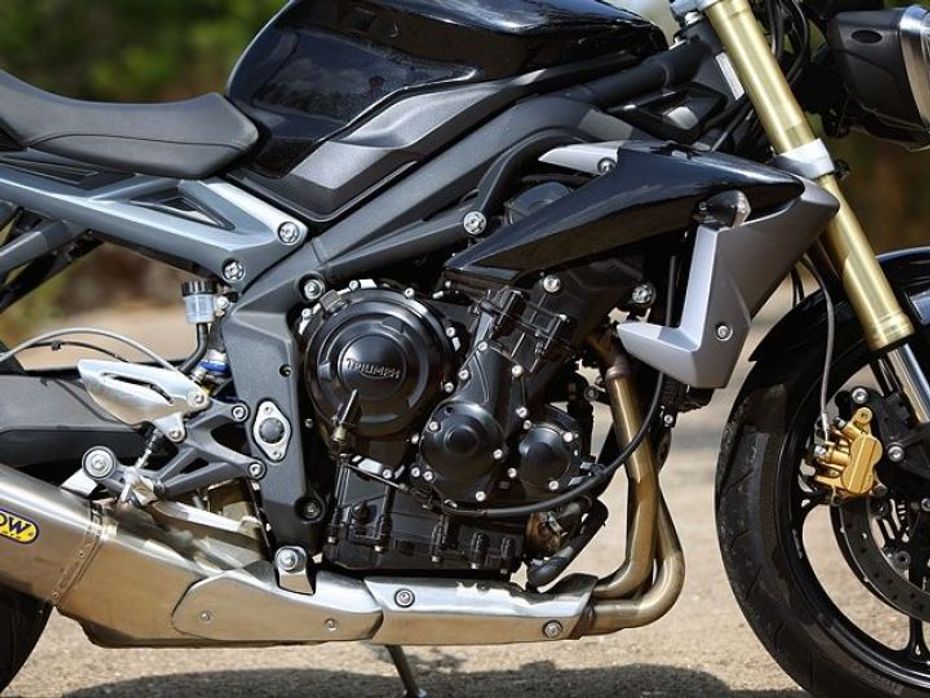
Engine:
The biggest talking about the new Street Triple S is it engine. The bike is powered by a new 765cc triple-cylinder unit which is based on the Triumph Daytona’s powerplant. Displacement of the motor has increased from 675cc of the older engine to 765cc and Triumph engineers achieved this by increasing the bore and stroke of the motor. The crank, piston, con-rods and balancer shaft are completely new and, according to the British bikemaker, the engine features 80 new parts. The Indian-spec Triumph Street Triple delivered 79.3PS at 11,054rpm and 57.3Nm at 8,375rpm.
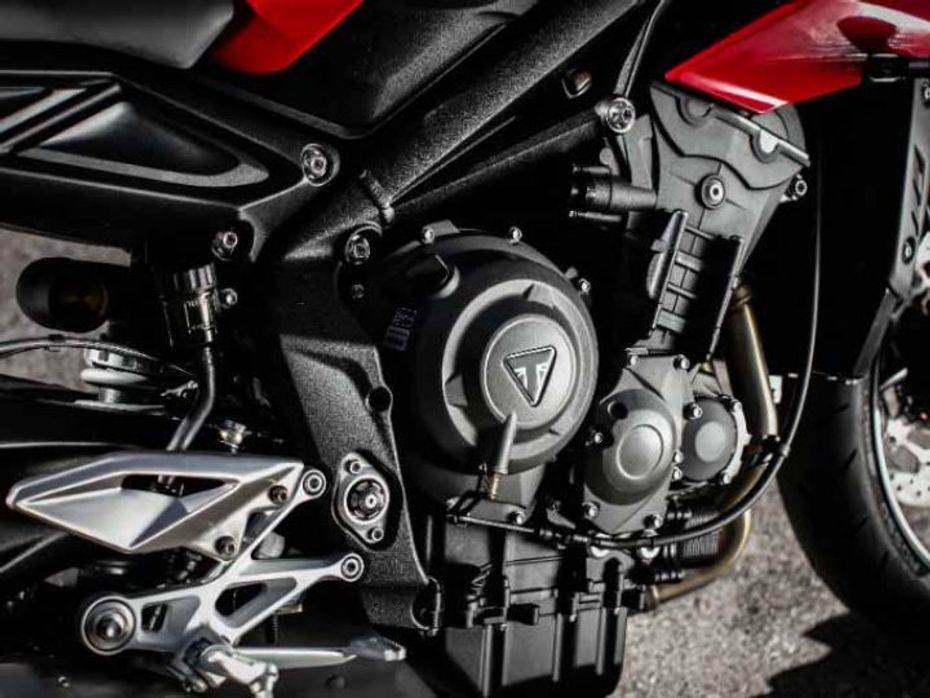
Triumph received a lot of flak for not getting the full-power version to India and the British bikemaker has tried to make amends by launching the international-sec Street Triple S in India. The triple-cylinder motor pumps out 113PS at 11,250rpm and delivers a peak torque of 73Nm at 9,100rpm. As you can see, the new bike has more grunt and will be understandably quicker and faster than the older bike. Triumph engineers have also worked hard on improving the low-end and mid-range performance of the bike, which is beneficial while riding in city.

We rode the top-spec Triumph Street Triple RS on the streets of Barcelona and were impressed by the performance of the engine in the cityscape. The bike also cruised at triple digit speeds on the expressway without any trouble. Another highlight of the new engine was its refinement levels which could be compared to that of Japanese inline-4 engines. The engine is mated to a 6-speed gearbox while the 1st and 2nd gear ratios are shorter than the older bike. The S model misses out on a slipper clutch which the R and RS model gets.

Electronic Goodies:
The Triumph Street Triple never had any kind of electronic aids, but with the competition stepping up the ante, the British brand was feeling a bit left out. To address this issue, the 2017 Street Triple S has been equipped with ride-by-wire technology that delivers crisper throttle response and better throttle control in comparison to the conventional unit. Addition of ride-by-wire has also allowed the Triumph Street Triple S to feature two ride modes - Road and Rain.
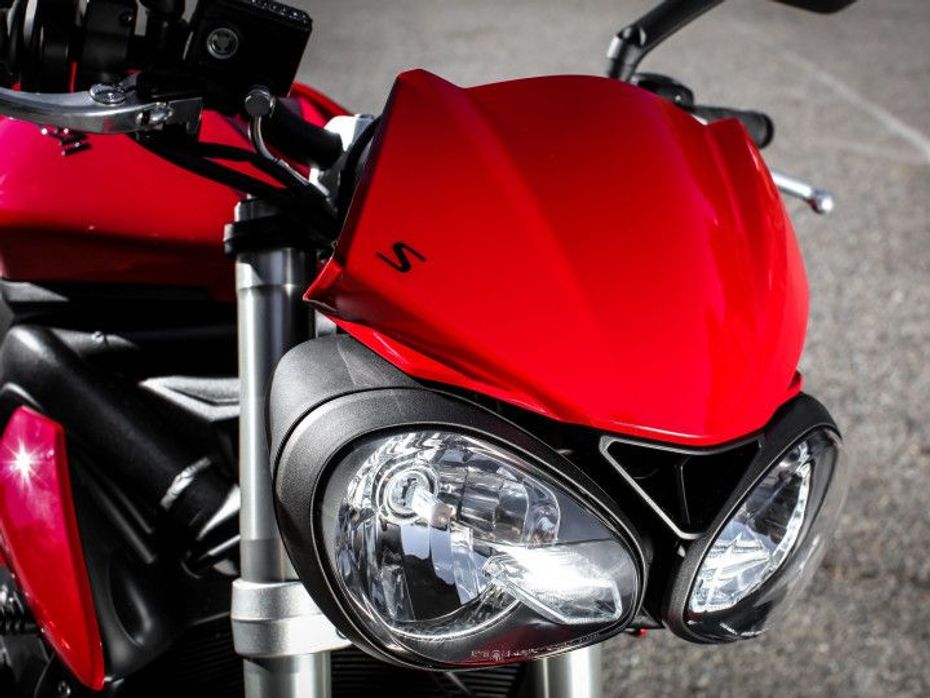
The Rain mode offers milder throttle response which is useful in wet and low grip conditions. The new motorcycle also sports traction control system that limits wheel slippage in low grip conditions. The Street Triple S, like its predecessor, gets ABS as standard fitment while the Street Triple R and RS gets switchable ABS.
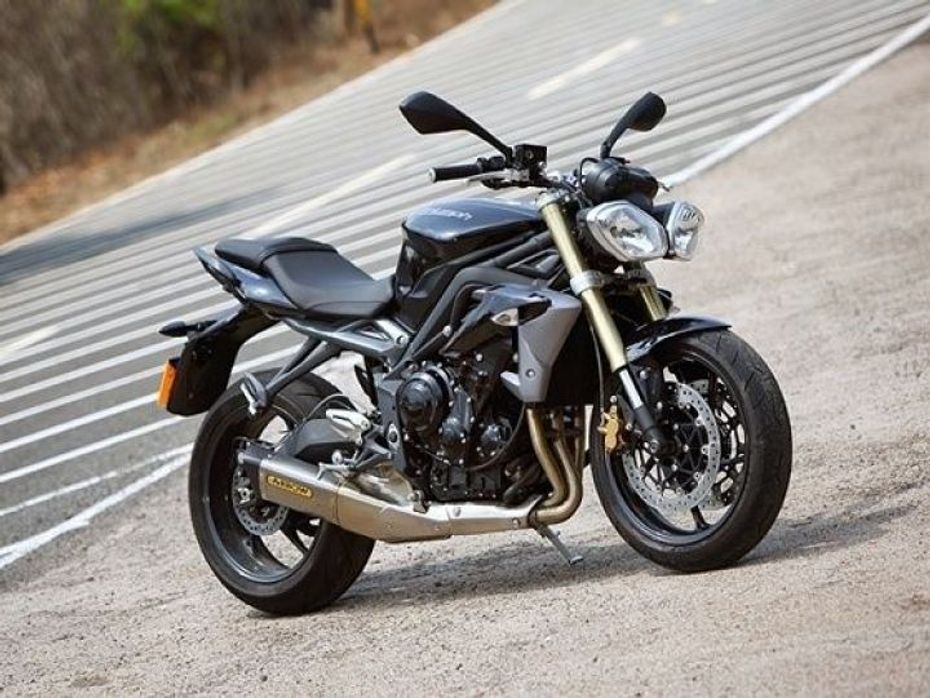
Cycle Parts:
The aluminium beam twin-spar frame on the Street Triple S is the same unit as seen on the older bike. But the new motorcycle features an all-new gullwing rear swingarm. According to Triumph, the new swingarm increases torsional stiffness and improves stability at higher speed. During our ride we found the new bike didn’t “squat” as much as the older bike did during corner exits. The older Triumph Street Triple’s frame was suspended on KYB 41mm upside down forks at the front and a KYB monoshock unit at the rear.
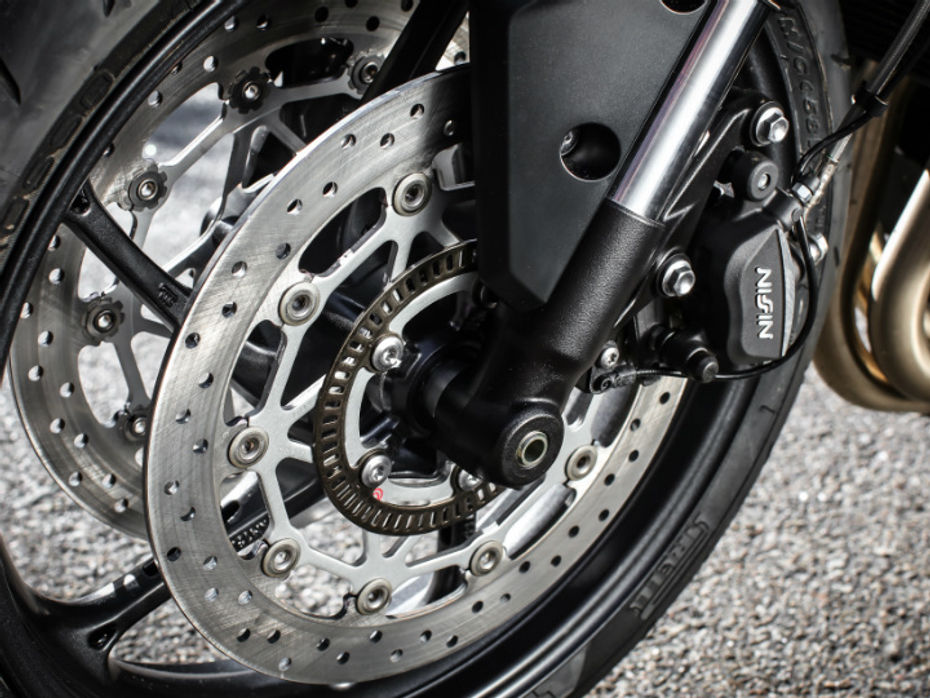
The 2017 Street Triple has been loaded with higher-spec Showa 41mm upside down separate function forks (SFF) and Showa piggyback reservoir monoshock which can be adjusted for preload. Suspension travel remain unchanged at 110mm at front and 124mm at the rear. We rode the RS variant and felt that the bike was set up on the stiffer side. Braking hardware remains similar on both the bikes with twin 310mm floating discs, Nissin 2-piston sliding calipers at front and single 220mm fixed disc unit with Brembo single sliding caliper. At 166kg, the new Street Triple S is lighter by 2kg compared to the older bike while saddle height has increased by 10mm at 810mm. Fuel tank capacity remains unchanged at 17.4 litres.
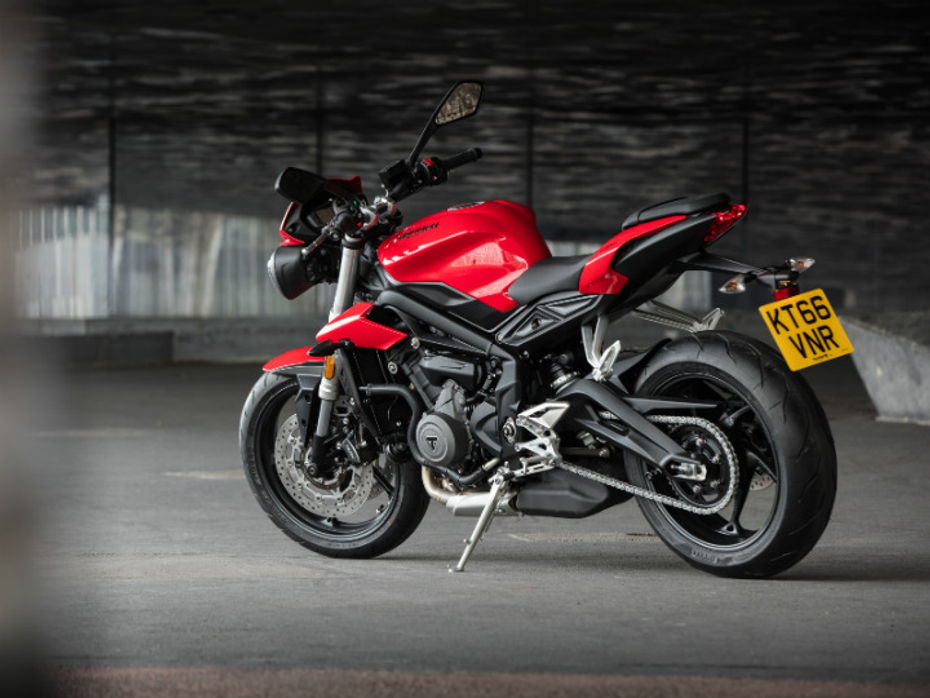
Price:
The Triumph Street Triple was on sale in India at Rs 7.91 lakh (ex-showroom, Delhi). The new Triumph Street Triple S retails for an introductory Rs 8.5 lakh (ex-showroom, Delhi). So, does the new bike justify the Rs 60,000 premium? The answer is a resounding yes. For the marginal premium what you are getting is a much improved bike in terms of performance, dynamics and features. The fact that we are getting the international-spec and not the toned-down version like its predecessor makes the deal even more sweeter, and the new bike is a worthy successor to an iconic motorcycle.
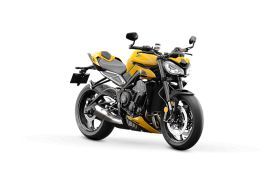

2020 Triumph Street Triple RS vs KTM 790 Duke vs Kawasaki Z900: Spec...

Triumph Street Triple RS vs Street Triple S: What's Different?

Triumph Street Triple S vs Kawasaki Z900: Comparison Review

Street Triple vs Kawasaki Z800 vs Kawasaki ER6N: 0-60 0-100:...

Here’s How The BS6 Kawasaki Z900 Is Different From Its BS4...

2025 Triumph Speed Triple 1200 RS Launched Internationally

Next-Gen Triumph Street Triple 765 Spied; Daytona 765 Might Be A...

BREAKING: Triumph Rides In The Craziest Street Triple Yet!

2023 Triumph Street Triple Range To Launch This Week

Book Your New Triumph Street Triple Now
 Kawasaki Z900
Kawasaki Z900
 Kawasaki Ninja ZX-6R
Kawasaki Ninja ZX-6R
 Kawasaki Ninja ZX-4R
Kawasaki Ninja ZX-4R
 Honda CBR650R
Honda CBR650R
India's largest automotive community
 Triumph Speed 400
Rs. 2.40 Lakh
Triumph Speed 400
Rs. 2.40 Lakh
 Triumph Rocket 3
Rs. 21.99 Lakh
Triumph Rocket 3
Rs. 21.99 Lakh
 Triumph Scrambler 400 X
Rs. 2.64 Lakh
Triumph Scrambler 400 X
Rs. 2.64 Lakh
 Triumph Trident 660
Rs. 8.12 Lakh
Triumph Trident 660
Rs. 8.12 Lakh
 Triumph Speed T4
Rs. 1.98 Lakh
Triumph Speed T4
Rs. 1.98 Lakh